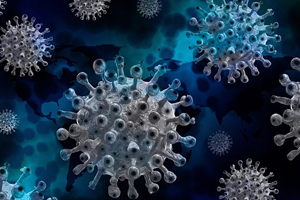
Tuesday December 1, 2020 | VICTORIA, BC
Editorial analysis by Mary P Brooke, B.Sc., editor | Island Social Trends
While the new-case tally is down from peaks of last week, it is still significant that 656 people have tested positive for COVID-19 in the last 24 hours, for a total of 33,894 cases in BC.
A full 8,796 cases are active, with 336 people currently hospitalized with COVID-19 (76 in intensive care) and the others recovering at home in self-isolation.
On top of that, 10,123 people are under active public health monitoring as a result of identified exposure to known cases. Think about that — as a west shore comparison, 10,000 people is almost the full population of seaside Sooke, or twice the population of rural Metchosin, or almost one-quarter the population of bustling Langford. Big numbers, big impact. All those people’s lives and their families are impacted (health-wise and financially), and very likely their employers or businesses, and connections with schools.

Long-haulers and better messaging:
Officially 23,774 people who tested positive have recovered (by following up with a negative test), but health-impacts can linger. Some people — of all ages — are now among the so-called ‘long haulers’ who are continuing to experience health impairment following a COVID infection (including deep fatigue and ‘brain fog’ resulting from the oxygen-deprivation aspects of how the virus attacks the cells of the human body).
People tend not to want to discuss their personal health in a public manner, so the long-haulers stories are generally still slow to come out.
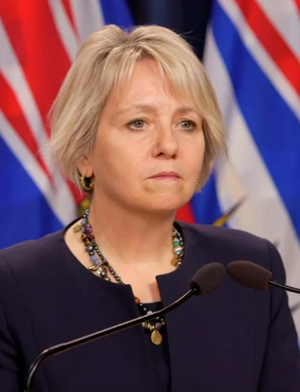
Meanwhile, on Monday this week, Provincial Health Officer Dr Bonnie Henry said that COVID-19 is “a serious disease at any age”. This sort of straightforward messaging has been long in coming. More people may have taken the virus more seriously had messaging been more forthright, earlier in the pandemic this year. The appeal to the general population about protecting seniors and elders — while very important — has not resonated very much among vibrant young adults as something they would heed as top of mind.
That “we are still learning about this virus” is the mantra. But that approach is in some ways no longer an excusable fail-safe. SARS-CoV-2 aka COVID-19 is an unrelenting virus that produces serious illness and can rather easily lead to death of the viral host (i.e. person). To the virus, that’s all we are — just a biological petri dish in which SARS-CoV-2 can reproduce.
The work of this virus is not any sort of higher biological goal other than survival-by-destruction — a wily and single-minded attack upon cells of the human body. In this sense, the battle against COVID is indeed a war. A subtle war, until it bites you hard.
From the very start (hearing news of a new coronavirus out of China now about a year ago), even instinctively it should have been recognized that this is no ordinary infection. Careful politics and cautious public health is about being sensible, calm and responsible, but it in some ways has also been falling short. Timing is everything in life… being late with a message (such as the importance of wearing masks) produces a negative impact upon the desired success — not only upon the level of immediate physical health but in terms of public confidence for the longer period of hanging on and doing the right things for protection through this infectious pandemic.
Rumblings all year about messaging:
There have been rumblings all year among media and community that somehow the messaging has not been urgent enough. ‘Shouldn’t the messaging be tougher?’ has been a question formulated in one way or another by media to public health and politicians in BC, ever since the pandemic was officially declared in March. Not to stir up trouble but because it’s the media’s job to sense the public pulse and put that forward in queries to the those who run the show — for the sake of the public good.
There has certainly been volumes of information — all the COVID-19 data is there to pore through on the BC Centre for Disease Control website (and further local information on health authority websites). But the context and meaning of that information has been formulated in a sporadic and disjointed way in public messaging, so far as marshaling the desired public response.
Various professional news media have worked hard throughout the pandemic at trying to repackage the information into meaningful timely messages, but ultimately the leadership in this area must effectively come from public health.
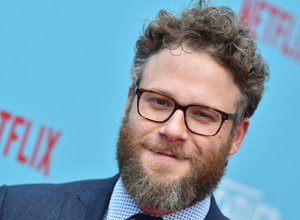
Calling out to social media influencers to help with government public health messages is, sorry to say, something of an embarrassment (even hinted as such by at least two of the influencers who were called to this task in the summer — stand-up comedian Seth Rogen and Hollywood A-lister Ryan Reynolds, who respectfully did their bit but sure seemed awkward doing it).

In June, a piggy-back moment on the Twitter feed of Hollywood actres Olivia Munn also didn’t really hit the mark. How could it? The business of protecting a population from a ravaging disease is not the work of celebrities and social media players. These desperate stabs at ‘whatever works’ clearly shows the struggle of BC government communications to understand the expectations of the public and the tools required for shaping that message.
On the visual graphics side (for information pages about COVID), the government has gone with a sketch-art style that resembles something out of the 1970s or 80s. Not sure that is resonating with youth either.

On Monday Dr Henry said at least twice that she is very grateful for how most British Columbians have responded by following her prescribed protocols and health orders. Indeed, BC caught the attention of the free world for our muscled-down flattened curve during the first wave in the spring of 2020. Most of us paid heed and did our part. But now in the second wave, wow, we’re skyrocketing with COVID numbers, off the chart. Per-capita we have some of the highest tallies in Canada now for case counts and deaths.
Cultural and motivational:
Part of the problem has been missing the mark with preparing and delivering culturally-adapted messaging for non-Anglo populations in the lower mainland areas (where case numbers are highest among scenarios of large family gatherings and multi-generational households); awareness of the need for that (or action upon it) was slow in coming.
The other part of the problem is the so-called COVID fatigue (people tired of adhering to public health protocols, even if they know how important the need). But certainly that was foreseeable. Other types of motivational messaging should have been developed in the summer well ahead of this fall-into-December ‘second surge’ that Dr Henry said this week has surprised her to some degree.
There is also the resultant complacency of ‘we’ve done all we can’ by releasing all the COVID-19 data. Good enough, to be transparent with the data. But most people don’t want an overnight lesson in epidemiology, they just want to know how to be safe (the protocols), and why (the seriousness of this illness).
Vaccine news defaults to complacency:
And while of course the news about vaccines against COVID being soon to come is welcome news, the vaccines are not here yet. And the distribution is likely into health care front-lines and long-term care. So the rest of us are still on the other frontline of day to day reality, without a vaccine, for probably many more months into 2021.
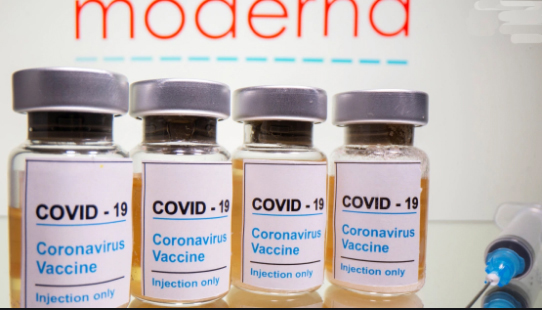
This is another pitfall, as it leads to complacency. The hoped-for vaccines (what a marvel of modern science, that we can pretty much rely on the success of that) are not here yet.
Hurdles still prevail including approval by Health Canada and the massive undertaking of distributing the vaccines across Canada within the refrigeration requirements (some of which are cumbersome and therefore costly, like the Pfizer vaccine that requires storage below -70°C). We are still in the viral war zone.
Management of things:
Overall, in a complex society of trying doing the right thing with available resources, the rollout of pandemic messaging — certainly well-intentioned — bears evidence of those in charge being comfortable inside the career-bubble of public health and the complex systems of government. It’s tough to see the real world for what it is, when immersed on the inside tracks — sleeves rolled up to fight the fight, but sheltered from many realities.
Leadership in BC around pandemic management is hard work and no doubt well-intentioned, but the timelag of things like mask-wearing policy (finally backed by the Doctors of BC at the end of October) and clamping down for the second wave has had negative consequences for people on the front lines (which is all of us, in some way or another). These consequences may be ‘unintended’, but they are not unimaginable (the gap between those two functionalities should be closing much faster now).
The Province maintains us all in a State of Emergency (renewed every two weeks since March 18, 2020 and still current to December 8, 2020). But obviously the government has been treading lightly on that fine line between generating cooperation through the fear of enforcement (such as fines) and forcing people to forfeit to varying degrees their livelihoods, social interactions and mental health.
By observing human nature, it seems that a civilized society such as we enjoy in BC would prefer to hear it straight and just get on with what needs to be done, rather than be left to stumble through a jagged maze of expectations that are generally being delivered too lightly and often in a tardy fashion.
Regional distribution still top-heavy on the mainland:
As has been the case throughout the pandemic in BC, the bulk of COVID-19 cases have been reported in lower mainland areas, with fewer cases on the island and in the north.
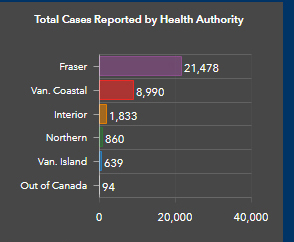
In the last 24 hours, there were 408 more cases in Fraser Health, 140 in Vancouver Coastal, 83 in the Interior, 15 in the north, and 10 on Vancouver Island.
Vancouver Island profile:
Here on Vancouver Island the number of new cases of COVID-19 has been steadily increasing in recent weeks. We stand at 639 cases in Island Health, of which 247 are active.
Now seven people are hospitalized due to COVID-19, with four people in intensive care.
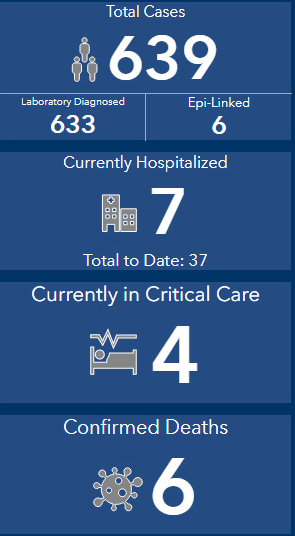
Of the 639 test-positive COVID-19 cases on the island, the bulk of cases (37.2%) have been in people in their 20s and 30s. About 10.2% of the cases have been in people ages 70+.
Children under the age of 10 have experienced 3.4% of the cases, while kids and teens (ages 10 to 19) have experienced almost 8.5% of the test-positive cases.
Thankfully there have been no further COVID deaths in Island Health since September 28. The tally stands at six.
Death tally:
Sadly, 16 more deaths were reported today. But hopefully that makes the impact that it should — i.e. to firm up everyone to be following every public health protocol. People are dying, daily, from the COVID-19 virus. Dropping like flies, to put it crudely. This is not a virus to mess around with.
On Monday Dr Henry reported a similar number of deaths from three days previous — 46 deaths (over the three-day weekend period from mid-day November 27 to mid-day November 30). That’s about 15 per day. No one should become numb to these numbers.
Today’s messaging:
Maybe people just need to be told to “stay home”, plain and simple. The premiers of Quebec and Manitoba said something to that effect to people in their jurisdictions recently. So that the second wave has a chance of being kept under control.
The health care system has been going full-tilt in BC and across Canada since March; the last thing any of us wants is fatigued or burned out health care personnel. For their sake, and ours.
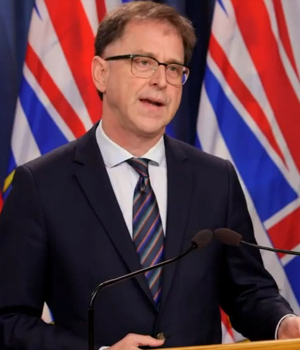
However, today, another gentle message: “It is a time for all of us to pause, to think about the many people throughout our province, our nation and the world who have been impacted by COVID-19 and other global epidemics. It is also a time to think about what we can do to make a difference,” it was stated in Dr Henry and Health Minister Adrian Dix’s joint statement today.
“Let’s be resilient in face of this surge. United and together, let’s make an impact today through our own personal actions,” it was stated in the December 1 BC Health joint release.
“Without exception, follow the provincial health officer’s orders in place. Remember that events, which refer to anything that gathers people together — whether on a one-time, regular or irregular basis — are not allowed for now. This includes religious, cultural or community events. Do not gather at home with anyone other than your household or core bubble,” is what BC public health says today.
“Let’s make today a day to slow community transmission and continue to protect everyone in our province.”
Long-term care:
Presently there are outbreaks in about 60 assisted-living, long-term care homes, and seniors’ rental buildings. On Vancouver Island there are four such outbreaks (including within the south island region at Saanich Peninsula Hospital in Saanichton and Veterans Memorial Lodge in Saanich).
Next live update:
The next live COVID media session with Dr Henry and Minister Dix is scheduled for Wednesday December 2 at 3 pm.

BC Government links:
For weekly health service delivery area case rates, visit page three of the BC Centre for Disease Control (BCCDC) situation report, updated each Friday:
http://www.bccdc.ca/health-info/diseases-conditions/covid-19/data
For information on overdoses, visit: https://www.stopoverdose.gov.bc.ca
People in B.C. experiencing violence can access VictimLink, a toll-free, confidential multilingual service available 24/7 by calling or texting 1 800 563-0808 or emailing: VictimLinkBC@bc211.ca (mailto:VictimLinkBC@bc211.ca)
For more details on the provincial health officer’s (PHO) Nov. 19 orders, visit: www.gov.bc.ca/covid19
Nov. 12, 2020, modeling update:
http://www.bccdc.ca/health-info/diseases-conditions/covid-19/modelling-projections
For the PHO’s orders, visit:
https://www2.gov.bc.ca/gov/content/health/about-bc-s-health-care-system/office-of-the-provincial-health-officer/current-health-topics/covid-19-novel-coronavirus
To see a map of COVID-19 cases by local health area, visit: http://www.bccdc.ca/health-info/diseases-conditions/covid-19/data
If you are experiencing symptoms, find a collection centre near you to get tested: http://www.bccdc.ca/health-info/diseases-conditions/covid-19/testing
For mental health and anxiety support, visit: www.bouncebackbc.ca
Or: www.anxietycanada.com
For a listing of the community exposure events, go to:
BCCDC (flights, work sites, etc.): http://www.bccdc.ca/health-info/diseases-conditions/covid-19/public-exposures
Fraser Health: fraserhealth.ca/covid19exposure
Interior Health: https://news.interiorhealth.ca/news/public-exposures/
Island Health: https://www.islandhealth.ca/learn-about-health/covid-19/outbreaks-and-exposures
Northern Health: https://www.northernhealth.ca/health-topics/outbreaks-and-exposures
Vancouver Coastal: http://www.vch.ca/covid-19/public-exposures
For the latest medical updates, including case counts, prevention, risks and testing, visit: http://www.bccdc.ca/
Or follow @CDCofBC on Twitter.
For non-health related information, including financial, child care and education supports, travel, transportation and essential service information, visit: www.gov.bc.ca/covid19
Or call 1 888 COVID19 (1 888 268-4319) between 7:30 a.m. and 8 p.m. (Pacific time), seven days a week.
For the latest videos and livestreaming of COVID-19 media availabilities, visit:
Facebook: www.facebook.com/BCProvincialGovernment/
Twitter: https://twitter.com/BCGovNews
YouTube: www.youtube.com/ProvinceofBC


